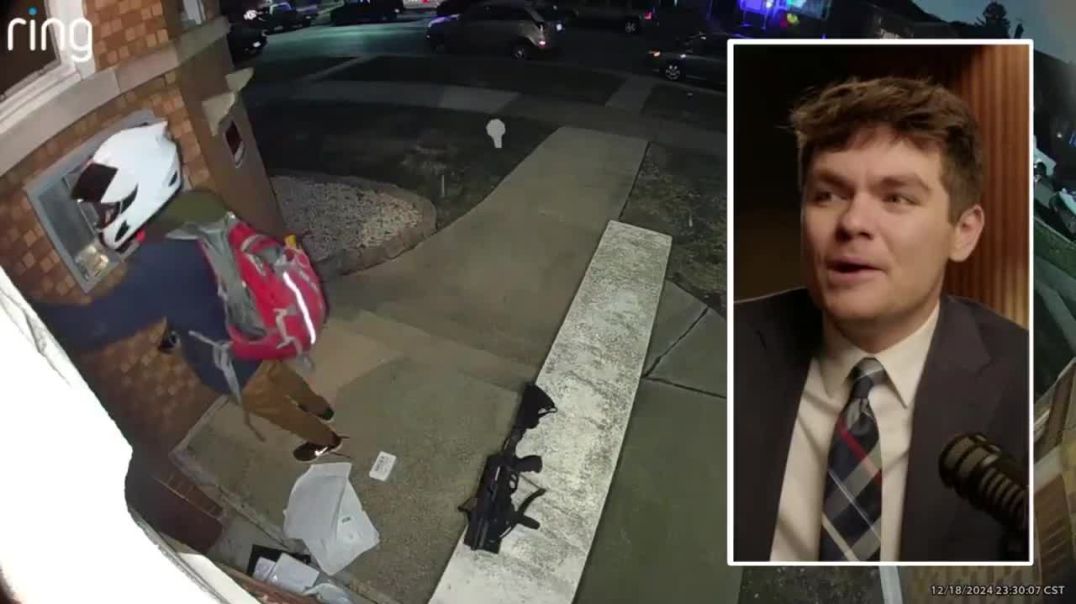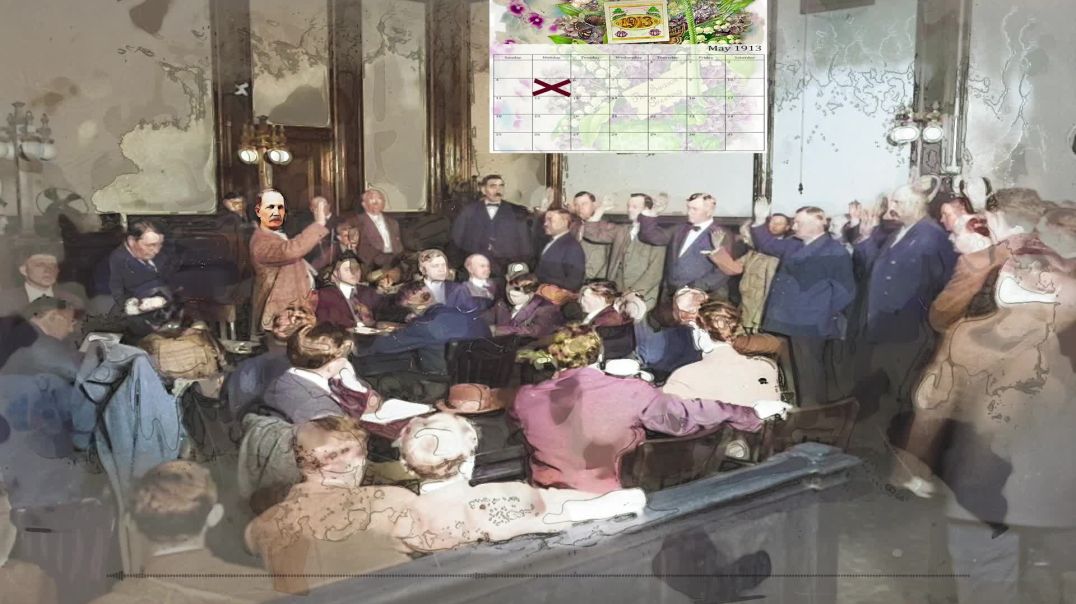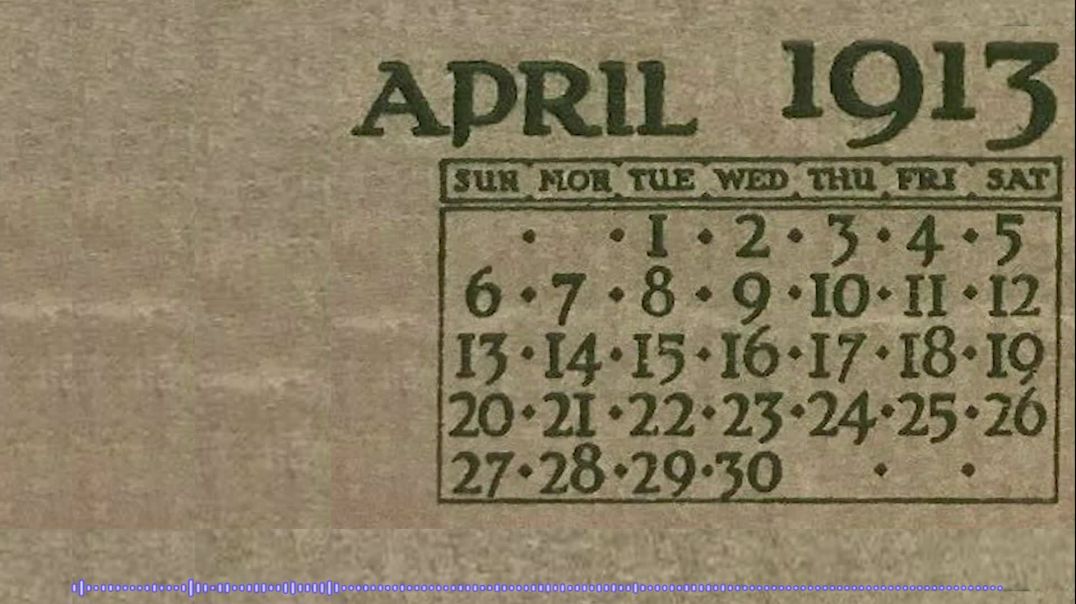Please donate now to help fund our work
- Film & Animation
- Music
- Pets & Animals
- Sports
- Travel & Events
- Gaming
- People & Blogs
- Comedy
- Entertainment
- News & Politics
- How-to & Style
- Non-profits & Activism
- McIntyre Report
- Jamie McIntyre uncensored
- RAW Report
- Candace Owens
- Steve Kirsch
- Tucker
- Bongino
- Elon musks
- Alan Jones Australia
- RT News
- Wayne Crouch Show
- Other
The Murder Of Little Mary Phagan - Vanessa Neubauer - Chapter Seven - The Commutation
Long before June 1915, John Marshall Slayton had agonized over the proposed commutation of Leo Frank's sentence. He received more than 100,000 letters pleading for a commutation or pardon for Frank and Georgia, and national newspapers reminded him and the public of his power of forgiveness and his responsibility to wield it. Several governors and senators backed the motion to pardon Frank, but efforts were also made by leaders across the country. South-North resentment and animosity rekindled with such ferocity that newspapers across the country covered the development. Most people outside Georgia sympathized with Leo Frank and again attacked Georgia's anti-industrial, anti-Semitic sentiments, and police incompetence. After the Supreme Court denied Frank's motion in April 1915, his lawyers began lobbying for an administrative pardon. The most important information in the document is that the sitting governor of Georgia, John Marshall Slayton, was politically respected and was running for the United States Senate. Judge Morris argued that Slayton was a member of the law firm defending Frank, and that Slayton had been a name partner in the law firm of Rosser, Brandon, Slayton and Phillips since May 1913. The Cobb Democratic Executive Committee publicly asked Slayton to resign as governor or to assure the Georgians that they would not commute Frank's sentence, but Slayton also refused. Frank said he was to be hanged on June 22, 1915, and Slayton said he was to be succeeded by Nat Harris on June 26, 1915. Mr. Slayton could have granted a reservation and let Mr. Harris decide on the motion to reduce, but he and others felt that Mr. Harris would reject the motion. Slayton retired to his home on the outskirts of town and petitioned the Supreme Court for a ruling on the issue of mob influence in court. He studied other Court of Appeals' official rulings, trying to find a balance between Georgia's judicial integrity and mob rule. After visiting the pencil factory, Slayton concludes that Conley must have been lying when she claimed to have used the elevator to move Mary Phagan's body from the second floor to the basement. Clayton took the elevator himself and confirmed that he had indeed reached the bottom, and evidence of this had come to light. Slayton spent a lot of time and attention researching elevators. On June 20, 1915, John Slayton locked himself in the library all day, working on the Frank case. He listened to lawyers for Hugh Dorsey and Leo Frank and the Marietta delegation led by former Governor Joseph M. Brown. When he came out of the library, he said he ordered a commutation. His wife got up and waited for him, and when she came out he said he had made his decision.
He had taken the precaution of taking Leo Frank a minute past midnight from Fulton Tower to the train station, then taking the train to Macon and then driving to the Mirageville Prison Farm. Through his own detective work and extensive reading of crime documents, Slayton was convinced that Leo Frank was innocent. John Slayton did not exonerate Leo M. Frank, but expressed his suspicions. Later that day, he issued a statement to the press, announcing that Frank's sentence would be commuted to life imprisonment. The statement was carefully crafted to carry no more weight than correcting the judge's mistake in denying further legal issues surrounding the case and assuring the public that there was no mob interference in the trial. . The case made headlines in US newspapers and resulted in more than 100,000 letters calling for leniency from various states. The people of Georgia want respect and goodwill from all states in the Union.
Thomas Jefferson wrote in the preamble to the Declaration of Independence that when it was necessary to break the political ties that one nation had with another, the reasons for the separation should be stated. Many newspapers and many people attacked Georgia over the sentence against Leo M. Frank, saying it was due to mob rule and that there was no evidence to support the sentence. The people of Georgia have a responsibility to protect the lives of their citizens and uphold the dignity of the law. Alternative mobs have been accused of terrorizing courts and juries by mobs to force juries to issue a verdict. The author believes that the facts of this case are presented with absolute fairness and firmness only to the point of truth.
An important detail in this audiobook is that Georgia has had the most comprehensive change of criminal jurisdiction of any state, and that defendants are free to voluntarily choose jurisdiction if they believe the issue is: A change of rights can be demanded: a fair trial is impossible. Any circle is given. Frank went to court without demanding a transfer and presented his case to his jury, which he accepted. After evidence was presented pointing to a crime against Frank with many unpleasant details, feelings for him became increasingly violent. He was the general manager of the factory and Mary Phagan was a poor worker. The document's most important detail is that the general manager asked the Cornell graduate to give her a chance and gave her time off when she refused.
The court audience expressed deep resentment towards Frank, but the court was unable to rectify it. Governor Brown said that with many people talking about the potential danger and the editor of a major newspaper suggesting trouble was expected, Governor Brown had the sheriff call the mansion to see if trouble was expected. rice field. The sheriff said he believed the lieutenant could stay out of any trouble.
John Slayton did not exonerate Leo M. Frank, but expressed his suspicions. Later that day, he issued a statement to the press, announcing that Frank's sentence would be commuted to life imprisonment. The statement was carefully crafted to carry no more weight than correcting the judge's mistake in denying further legal issues surrounding the case and assuring the public that there was no mob interference in the trial. . The case made headlines in US newspapers and resulted in more than 100,000 letters calling for leniency from various states. The people of Georgia want respect and goodwill from all states in the Union.
Thomas Jefferson wrote in the preamble to the Declaration of Independence that when it was necessary to break the political ties that one nation had with another, the reasons for the separation should be stated. Many newspapers and many people attacked Georgia over the sentence against Leo M. Frank, saying it was due to mob rule and that there was no evidence to support the sentence. The people of Georgia have a responsibility to protect the lives of their citizens and uphold the dignity of the law. Alternative mobs have been accused of terrorizing courts and juries by mobs to force juries to issue a verdict. The author believes that the facts of this case are presented with absolute fairness and firmness only to the point of truth.
An important detail in this document is that Georgia has had the most comprehensive change of criminal jurisdiction of any state, and that defendants are free to voluntarily choose jurisdiction if they believe the issue is: A change of rights can be demanded: a fair trial is impossible. Any circle is given. Frank went to court without demanding a transfer and presented his case to his jury, which he accepted. After evidence was presented pointing to a crime against Frank with many unpleasant details, feelings for him became increasingly violent. He was the general manager of the factory and Mary Phagan was a poor worker. The document's most important detail is that the general manager asked the Cornell graduate to give her a chance and gave her time off when she refused.
The court audience expressed deep resentment towards Frank, but the court was unable to rectify it. Governor Brown said that with many people talking about the potential danger and the editor of a major newspaper suggesting trouble was expected, Governor Brown had the sheriff call the mansion to see if trouble was expected. rice field. The sheriff said he believed the lieutenant could stay out of any trouble.
A key detail in the document is that Frank promised to go to a baseball game with his brother-in-law on Friday afternoon, but broke off the engagement on the grounds of financial statements that needed to be prepared before the inquest jury. be. State officials said Frank was at the factory Saturday afternoon processing the body of Mary Phagan, which was the reason Newtley was given the unusual leave of absence. The cook's husband testified that he visited his wife at the home of the defendant's father-in-law, Selig, on Saturday, the day of the murder, and that Frank had come to dinner, but she had not eaten. Chef's affidavit was taken by investigators and she claimed it was taken under duress, which tended to corroborate her husband's story. The cook denied the veracity of her affidavit because she was extorted by her husband and investigators, threatened with imprisonment if she didn't comply, and her wages were increased by her parents, she said. explained. Frank.
A key detail in the chapter is that Ms. Frank and her mother had a conversation on Sunday morning, and evidence presented suggests that Mr. Frank manipulated the notes to burden Ms. MckNight. It means that it shows that he was not in the mood due to excitement. To do so, please read the instructions correctly. Montine Stober also testified that Mary Phagan's hair was washed with Pintal soap, but this would affect the doctor's ability to judge the similarity between lathe hair and Mary Phagan's hair. A large amount of cords from the person who strangled Mary Phagan was also found on the metal floor of the room and then severed in the basement. Detective Starnes testified that he had seen one such cable in the basement, but that it had been cut into pieces. Detective Holloway testified that these wires ran throughout the building and into the basement.
A key detail of the document is that the State has argued that the defendant's witnesses will change their testimony not against the defendant, based on the suggestions of counsel and the hearing. An examination of the files does not support claims that a lawyer was employed by the police department prior to Frank's arrest. The most surprising and spectacular testimony in the case came from Jim Conley, 27, a black man who was a regular member of a chain gang. He had worked there for two years and knew the factory very well. He had been working in a basement for two months and operating an elevator for a year and a half when he was arrested by investigators on May 1 and 13.
Two notes were found near the body in the basement. The most important details of this document are his two quotes on brown paper and a black handwritten notepad. The brown paper was a carbon copy of an order form with the headline "Quote Atlanta, Georgia 19", written in black handwriting. Investigators learned in mid-May of Conley's writing ability and prepared a affidavit and three affidavits, which the defendants submitted at their request. The affidavit assesses the content of the evidence he presented on the witness stand as follows: Mr Conley said Mr Frank asked him to come to the factory on Saturday and take care of him as before, which means Mr Frank expected to meet with the woman. claimed. If Frank stamped his foot, Conley would lock the factory door and whistle to open it.
Conley was in a dark place out of sight, next to an elevator, behind some boxes. Several people, including male and female employees, climbed the stairs to Frank's office, he noted. As Mary Phagan climbed the stairs, she heard a scream. As Frank stamped, Conley unlocked the door and went up the stairs. Conley found Mary Phagan lying in a metal room with a handkerchief under her neck and head, as if soaked in blood. Frank tells Conley to prepare a cloth, put the body in it, and carry it away from the changing room. Frank returns to the office, obtains the key and unlocks the panel to operate the elevator, and they roll the body out of the fabric. Frank climbed the ladder back to the first floor, Conley took the elevator, and Frank, who was on the first floor, took the elevator to the second floor where the office was. The most important detail of this text concerns the trial of Frank Conley. On May 31, 1913, an unindicted woman filed an affidavit that she saw Conley and Frank in a lively conversation on the corner of Forsyth and Nelson Streets. The state produced 10 witnesses who attacked Frank's character. Some of them were factory workers who testified that Frank's lustful reputation was bad and that they had been seen trying to marry Phagan, whom Frank exposed to the detectives. The defense presented nearly 100 witnesses to Frank's good character, including Atlanta residents, Cornell students, and Cornell professors. The state case omitted a number of cases that the state, on the whole, claimed to support Frank's guilt. Defendant was born in Texas and completed his education at the same institution. Conley's admission that he wrote the note found in the dead girl's body, the role he played in the deal he admitted, and his testimony about both writing the note and transporting the body to Keller. The story and explanation made the whole case revolve around Conley. The mystery of the case is how Mary Phagan's body was placed in the basement. She was found 46 feet from the elevator, her face suggesting she had been dragged through the dirt and ash. There were stains on her eyes and mouth. Conley took the body underground in an elevator with Frank on the afternoon of April 26, 1913, to speculate that Frank was able to walk 136 feet (about 40 meters) on the edge of the building where the body was removed. He testified that he was carried away to It's been found. Conley swore he didn't go back downstairs and took the elevator upstairs while Frank climbed the ladder at 03:00 on the morning of April 27: When investigators entered the basement through the basement, they found human feces in their natural state. Everyone, including Conley, admits that the elevator only stops when they reach the basement floor, but when they used the elevator, it crashed into the excrement, which they stepped on, causing Conley to Since being there it proved that the elevator has not been used again.
An important detail in this document is that Conley was strong and powerful, and that the place to watch in the dark was a few feet from the hatch leading to the basement. On Monday morning, he twice flushed the elevator shaft doors and forced Mary Phagan to walk within a few feet of Conley's unseen. Conley testified that he wrapped the body in a bag of crocuses at Frank's suggestion, but at trial he testified that he wrapped the body in a bed sheet similar to the Attorney General's shirt. The only reason for such a statement change was that if the bag of crocuses weren't torn apart, it would be too small for the purpose. Conley said that after the crime was committed, Frank suddenly said Emma Clarke and Corinthia Hall and locked Conley in a closet. According to the irrefutable testimony of two witnesses, they arrived at the factory at 11:35 a.m. and left at 11 :45 o'clock in the morning. Conley said Frank told him to leave his hat, slippers and ribbons there, but Frank took them and threw them 57 feet away in front of the cauldron. Frank also instructed Conley to lock the door when he stamped his foot and open it when he whistled, but Conley waited until he locked the door before unlocking it. board. Mary Phagan's wound extended to her skull near the top of her head, but did not bleed.
Barrett said six or seven strands of her hair were found on the lathe she was working on Monday morning, where she may have been punched and cut off her head. suggests. It is acknowledged that her blood was not detected there. The lathe is about three feet high, and Mary Phagan is said to be stocky and angular. Her wounds must have been so deep that she couldn't explain the difference between her height and her lathe's height. Some state witnesses testified that her hair resembled Mary Phagan's, but Dr. Harris said that under the microscope, Mary Phagan's hair was compared to the hair on the lathe, and that it was Mary Phagan's hair. concluded that it is not.
Barrett and others saw blood stains near the locker room, and Conley said he dragged her body away. Police Chief Beavers said he didn't know if it was blood, and Detective Stearns said he wasn't sure if the stain he saw was blood. Detective Scott was shown several specks of blood in the metal room. The most important detail in this text is that Dr. Claude Smith testified that in one of the chips he found 3-5 blood cells under the microscope, a half-drop was to blame. Frank says some of the stains left after picking up the chip weren't blood.
Barrett, who worked on the metal floor and had claimed a reward for finding hair and blood, said the stains were not present on Friday and that several witnesses confirmed it. Stated. There were testimonies that injuries occurred frequently in the factory, and that bleeding was not uncommon near the women's locker room. There was no blood in the elevator.
Dr. Smith, a bacteriologist in the city, said the presence of blood cells could be detected months after the blood dried. All of this is linked to the question of whether the murder took place in a metal room on the same floor as Frank's office. However, the patterns varied from quarter to quarter size, except near metal rooms at designated locations. A quarter the size of a palm leaf fan.
The defense obtained two affidavits and three affidavits from Witness Conley. The first statement, dated May 18, 1913, details his actions on April 26, naming the tavern he frequented and the whiskey and beer he purchased. On May 24, 1913, he wrote an affidavit for detectives stating that Frank had asked him if he could write it the Friday before the Saturday on which the murder took place. On May 28, 1913, he made another affidavit for detectives stating that after leaving home on Saturday morning, he bought two bottles of beer, went to a bar, and won $0.90 on dice. rice field. He then met Frank at the corner of Forsyth and Nelson Streets and asked him to wait until he returned. Mr. Conley went to the factory and mentioned various people he saw climbing the stairs from the spy location to Mr. Frank's office. An important detail in this document is that Frank Conley whistled and they entered a private office. Frank asked Conley if he could write and asked if he could dictate three times. When Conley crossed the street, he found a box containing two dollar bills and two silver coins. At the Beer Saloon, Conley bought half a pint of whiskey, $0.15 worth of beer, $0.10 worth of stovewood, a bratwurst worth of nickel, and gave his aging wife $3.50. Tuesday morning Frank came upstairs and told me to be a good boy. On Wednesday, Conley washed the shirts at the factory and hung them on a steam line to dry. On May 29, 1913, Conley filed another affidavit stating that Frank had told him he had picked up her girl and dropped her off. On May 29, 1913, Conley filed another affidavit stating that Frank had told him he had picked up her girl and dropped her off. On May 29, the key detail in this affidavit is that Conley picked up the girl and put her on her shoulders while Frank climbed back up the ladder. He also took her hat and slippers he had brought upstairs and threw them in the garbage pile in front of the stove. The affidavit also states that Mr. Frank handed Mr. Conley the money, and while Mr. Conley was looking at the money in his hand, Mr. Frank said, ``Give me this. It is also written. and nothing happens. ” The original affidavit was issued at the end of the affidavit. A key detail in the document is that on May 18, investigators detained Ms. Conley for a few hours to obtain her confession, but Ms. Conley denied having met the girl on the day of her murder. It is what I did. On May 25, I interrogated him for three hours, and when I repeated the story on May 27, we talked for about five to six hours. Regarding Conley's testimony and affidavit, Detective Scott, who was referred by the state, said: "We tried to impress that Frank didn't write that memo on Friday, that it wasn't rational, that it was deliberate, and that it wasn't possible," he said. He declined to testify further, saying he did so truthfully.
On May 28, Chief Ranford and his team spent five or six hours scrutinizing Quinn Conley, trying to uncover some of the outliers in his testimony. They drew attention to the fact that his previous testimony was well considered and unacceptable, and subsequently held that his previous testimony was well considered and unacceptable. After being told, it issued a statement on May 28. They tried to get him to talk about the little mesh bag, but he denied having seen it. On May 18, in Chef Ranford's office, they tried to persuade him to write, and he wrote down his testimony before a jury. Upon re-examination, Mr. Conley felt the need to explain the mesh bag, and for the first time stated that Mary Phagan's mesh bag was on Mr. Frank's desk, and Mr. Frank put it in the safe. This is the first mention of bags. The first indication that Frank was a pervert was Conley's testimony on the witness stand. He explained that Frank had a different build like other men, and that Jews were circumcised, so someone might have encouraged him to do so. Mr. Conley is also open to the proposal, he said, saying he knows that when he tells a story, he has to change it and tell the full truth. He also admitted that he wrote the notes found on Mary Phagan's body, and that the words "quote at the end of the quote" were dictated by a white man. Annie Maud Carter was also in prison and wrote many of the most vulgar, obscene letters I have ever read. These letters are the most vile and sexual I have ever read. The most important detail of this document is Conley's testimony and the use of the word "last quote" in Annie Maud Carter's memo. In Conley's testimony, he uses the words "quote Negro," and in Annie Maud Carter's note, "I have a negro looking at you." I also use the words , quote end, quote play end quote, quote, amateur, quote end, love, quote end, and quote myself, quote end. Defense attorneys point out that Conley's hallmark was his double use of adjectives: B. "long quote", "tall", "black", "black", "end quote", "long quote", "skinny", "tall", "black", "end quote". Conley was a tall, slender, beaked, and stocky man, using expressions such as "He was a tall, slender, beaked, and heavy man," and from 128 words I wrote four different notes, but only two were found. Detective Scott dictated eight words to Conley, which he swore took about six minutes to write. Frank said he provided information that Conley had signed a receipt at a particular jewelry store with a deal. At the time of the trial, the death certificate, written on brown paper, did not have a date line and stated Atlanta, Georgia, age 19. After that, when I put the paper under the magnifying glass, it was written in blue pen as follows. The name Becker was written there. He worked in a factory on the fourth floor.
Mary Phagan was murdered at a pencil factory on Sunday morning. Monte Stover looked at her watch and said she had arrived at 12:05. W.W. Rogers testified that both clocks were working and showing the correct time, so Montene Stover must have arrived before Mary Phagan. Lemmie Quinn testified that he arrived at Mr Frank's office at 12:20 pm and met Mr Frank at 12:30 pm. J.A. White called her husband at the factory and left before 1:00 p.m. At 12:50 p.m., Frank came up to the 4th floor and said he wanted to leave.
Evidence for the defense suggests that the transportation of the body took a very long time and did not match the exact time that the visitor saw Frank. The back door of the basement was Conley's escape route when he tried to escape from his creditors. Detective Stearns found traces of bloody fingerprints on the door and stripped two of what he believed to be bloody fingerprints from the door. The motive for this murder could be either robbery, or robbery and assault, or assault. The mesh bag was in Mary Phagan's hand, first described by Conley during re-examination at the trial. The doctors' testimony did not show this to be the case, but they testified that the excitement could have caused the blood to flood. Evidence indicates that Conley was the most depraved and lewd black man who ever lived in Georgia. The most important detail in this text is the jury verdict in the case of Leo M. Frank, who was convicted of murder. Juries are selected to consider evidence and determine its probative value, and the only authority that can consider the merits of a case and challenge the impartiality of a judgment is the judge of first instance. Constrained by the Constitution and the correction of errors of law, the Supreme Court found in the trial that no errors of law existed and rightly determined that there was sufficient evidence to support its ruling.
According to testimony, this negro had a habit of allowing men to go to the basement for immoral reasons, and when Mary Phagan passed him near the hatch leading to the basement, she may have attacked her. be. The Supreme Court concluded for granted that there was no legal error in the proceedings and that there was sufficient evidence to support the judgment. Orally from the bench, Judge Roan said he wasn't sure about the defendants' guilt, but didn't need to convince the jury that he had been persuaded. This statement was not included in the motion to annul the new trial because judges have the discretionary power to sentence defendants to life imprisonment if convicted of murder based on circumstantial evidence. But Judge Roan said that if the jury in State v. Frank was convinced beyond a reasonable doubt that the evidence in the case was beyond a reasonable doubt that the defendant was guilty of murder. I misunderstood my authority as evidence when I accused it of authority. The jury finds the defendant guilty.
The most important detail of the document is that Judge Roan, if Judge Roan had the extreme suspicion expressed in his testimony and remembered the powers conferred by law, he sentenced the defendant to life imprisonment. That is what I said. In a letter to lawyers, he said he would ask the prison commission to recommend the governor commuting Frank's sentence to life in prison. After months of consultation, an inquiry was made and Becker testified that from 1888 he worked in a pencil factory until 1912, during which time he signed orders for goods and consumables.
The brown paper on which the death certificate was written bears Becker's signature, and by the time Becker left Atlanta in 1912, all the blank papers bearing the number 19 had been exhausted. Philip Chambers testified that there was an unused purchase order in the office next door to Frank's, and that he had been in the basement of the factory where no books or papers were found for a long time. On Sunday morning, Sergeant Dobbs visited the scene and found a legal pad on the ground near the note. Officer Anderson testified that the basement was full of pencils and trash. Darley testified that the paper with the note was a blank order form and was likely to be found throughout the building. The most important details of this document are the evidence presented to the jury and the matter of time. The state said Mary Phagan visited Leo M. Frank's office to pick up her paycheck sometime between 12:05 p.m. claimed to have made a statement. Monteen Stover swears that he came to Frank's office at 12:05 p.m and stayed until 12:10 p.m, and that he did not enter the room in which Frank was said to be working. The only way to reconcile her statement would be if, for the first time in her life, she entered Frank's office instead of the room where he allegedly worked. If Frank were working at his desk, he wouldn't be visible from the antechamber.
According to Monte Stover's testimony, Mary Phagan had to come pick up her paycheck, and Frank took her back to her medal room, intending to murder her while Monte Stover was in the office. He said he was. Solid evidence indicates that Mary Phagan had dinner at 11:30 a.m., and tram drivers told her she was at the corner of Forsyth and Marietta Streets at 12:11 p.m. I was on trolley number 1150, which was due to arrive at The distance from this place to the pencil factory was about 5 minutes her 1 mile and the walk to the factory took her 4-6 minutes. The car appears to have arrived as normal, but may have arrived two to three minutes earlier than planned. Evidence suggests that Mary Phagan was murdered in a pencil factory between 12:05 and 12:10.
Monte Stover looked at her watch and said he had arrived at 12:05. W.W. Rogers testified that both watches were running and showing the correct time. Leme Quinn testified that he arrived at Mr Frank's office at 12:20 pm and met Mr Frank at 12:30 pm. Mrs. J.A. White called to meet her husband at her factory and she left before 1:00 PM. At 12:50, Frank came up to the 4th floor and said he wanted to leave. Evidence for the defense suggests that the transportation of the body took a very long time and did not match the exact time that the visitor saw Frank.
Evidence indicates that the lower door was unlocked when Mrs. White came in at 12:30 p.m. Detective Stearns found traces of bloody fingerprints on the door and stripped two of what he believed to be bloody fingerprints from the door. The motive for this murder could have been either robbery or assault, and there is no indication that Frank's motive was robbery. The mesh bag was in Mary Phagan's hand, first described by Conley during re-examination at the trial. The doctor's statement provided no information about his performance. Evidence indicates that Conley was the most depraved and despicable Negro who ever lived in Georgia, monitoring and describing the clothing and stockings of the women entering the factory. If Frank had hired Conley to babysit, it would have been just Mary Phagan, as he hadn't inappropriately proposed to another woman that day. An important detail in this document is that the jury found Leo M. It means that The Supreme Court found no error of law during the proceedings and concluded that there was sufficient evidence to support the judgment. First-instance judges are required to make wise judgments, and cannot allow judgments that they consider unjust.
In this regard, Judge Roan verbally stated that he was uncertain of the defendant's guilt. An important detail in this sentence is that Judge Roan, in charging the jury in State v. Frank, has the right to do so if he believes beyond a reasonable doubt that the defendant is guilty of murder. It means that he misunderstood his own authority as evidence when claiming that. Our jury finds the accused guilty. But if they go further and say nothing else in the verdict, the court will be forced to convict the defendant of the highest murder charges. H. hung around his neck until his death. The statement was not included in the motion to stop the new process under Article 63 of the Code. Judge Roan wrote to attorneys asking the prison board to recommend that the governor commute Frank's sentence to life in prison.
Although he was in a state of unease when he upheld the verdict, he is still unsure if Frank is guilty. The execution of a person whose guilt has not been fully proven is unthinkably horrific, and the Chief of State should make every effort to ascertain the truth.
The most important detail in this section of the chapter is that in the case of commutation, jury verdicts are not appealed, but that penalties for murder are imposed by the state and are penalties that a judge, without misunderstanding, would have imposed. That is. A pardon petition has been filed in the case of a white male hunter charged with murdering two white women in Savannah City. The Judge and Attorney General refused to recommend a pardon, but after reviewing the evidence and at the instigation of Savannah leaders who questioned the defendant's guilt, I commuted the sentence so that the innocent man could not be executed. . . Evidence was presented that he borrowed a gun, threatened him, and fled after the shooting. A key detail in the document is that the governor of Georgia refused to block an escapee from Fannon County Jail, commuting the sentence to life in prison. The judge and attorney general recommended a suspended sentence, which the governor granted, and on the judge's and attorney general's recommendation, the governor commuted the sentence to life imprisonment. Since then, three items have come to light since the trial, including Carter's memoirs and Dr. Carter's testimony. Harris said the hair on the lathe was not Mary Phagan's. The governor's conscience is a condemning conscience, and the governor cannot bear to be constantly dealing with a condemning conscience that reminds him that he did not do what he thought was right. The citation states that there are areas where the law allows life imprisonment instead of the death penalty, about which there is no reasonable doubt and absolute certainty. For Leo M Frank was plagued with doubts from the judge of the first instance, two Georgia court judges, two U.S. Supreme Court justices, and one of the three prison commissioners.
Governor John M. Slayton allowed the death penalty to be commuted to life imprisonment. The reaction to the cuts was immediate, with large angry rallies in Cobb, Fulton and other counties. In Marietta, a group hung a portrait of Frank and Slayton in the town park, and a portrait of the Governor with the words "Our Traitor Governor". The first issue of Tom Watson's The Jeffersonian continued to denounce and denigrate John Slayton, stating that "our great empire has been raped." A key detail of the document is that a mob was formed, allegedly marched to the state capitol to seek out and assault the governor.
Judge John J. Hart tried to address them as a pacifist, but they yelled at him. A mob then formed in Atlanta and attempted to march against the governor's home. Governor Slayton did not live in the governor's mansion, but in his own house. Fearing violence, the governor called in his bodyguards, members of the state militia. Captain Stokes was in charge, and Walter W. Foote was a relative of Pollard Turman's wife, Laura Trautman. The troops were stationed at a reasonable distance around the Governor's Palace.
Jefferson Davis McCord, former Athletic Director of Emory University, was a Private First Class in the University's Militia Division. A deadline was set on the street in front of the house, and the mob reached the line of troops. Lieutenant Foot attempted to address the crowd, but he was hit with a beer bottle. The mob dispersed, but the militia remained on guard for three days. During the week, violent anti-Semitic riots broke out, and Jewish businessmen in Atlanta and Marietta went out of business. Slayton risked his life to attend the inauguration of Nat E. Harris. Loud boos, hissing, and meowing erupted from the State Capitol as Mr. Slayton handed over the Georgia coat of arms. Slayton was able to leave Georgia unharmed and the following week he and his wife vacationed in Adirondack, New York, before embarking on a tour of Georgia, the Northeast, Midwest and Far West. Many years passed before the Slaytons' return seemed certain. John Slayton expressed his belief in Frank's innocence in a letter to his cousin Lamar on March 15, 1945. The letter described Sally, who never thought or did anything wrong when the mob threatened her home and life.
Sally accompanied all the meetings of the American Bar Association, and Justice Arthur Powell said of her that she was the Queen of her Bar Association. Sally made her debut at the White Greenbrier in Sulfur Springs and her sponsor and companion was Robert E. Lee's daughter Miss Mildred Lee. This letter was written to Sally for her amazing kindness and tenderness, and Sally would have been happy to have read it in her lifetime.



















